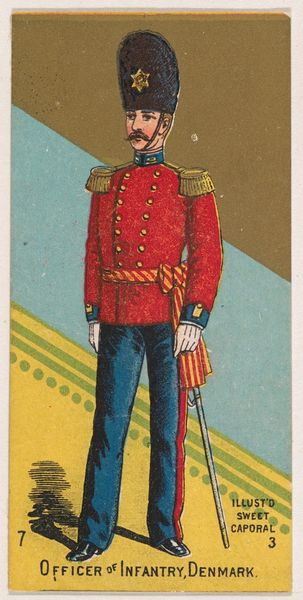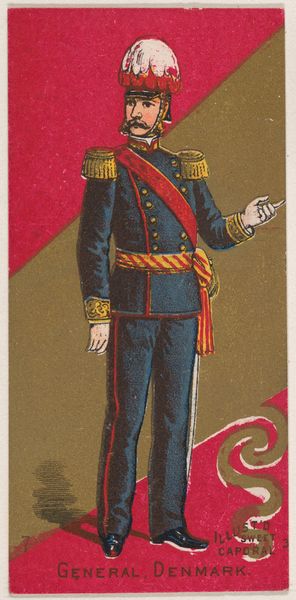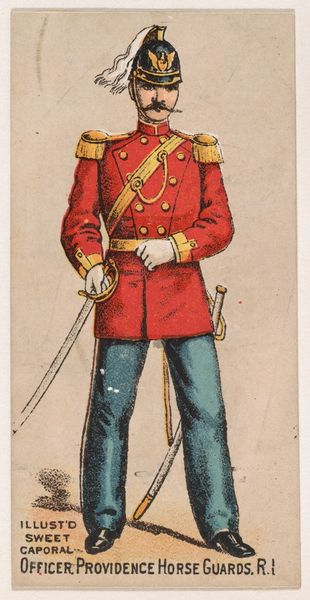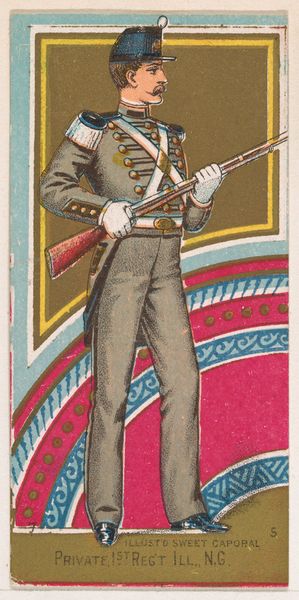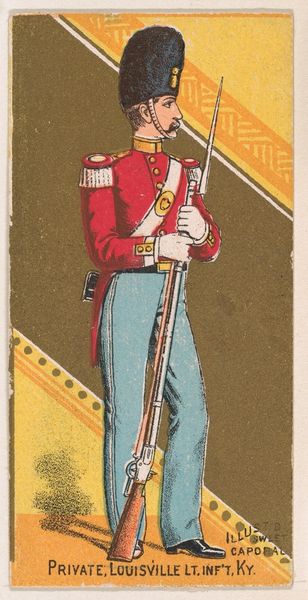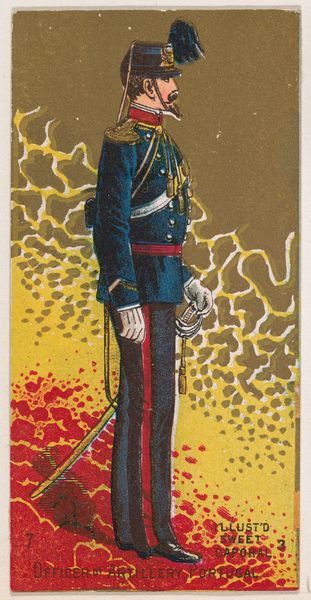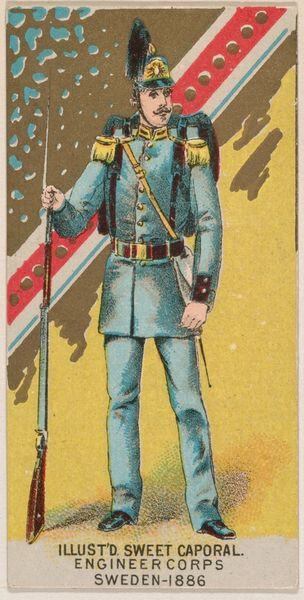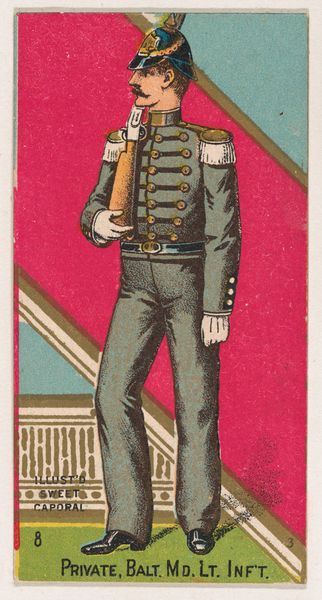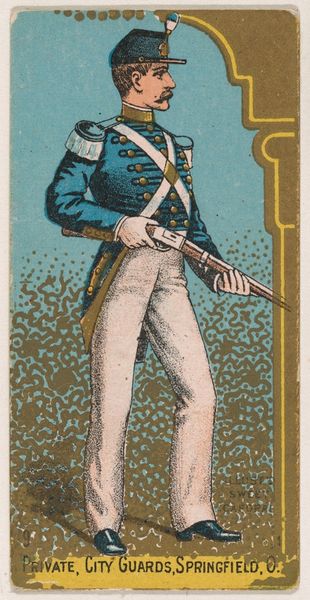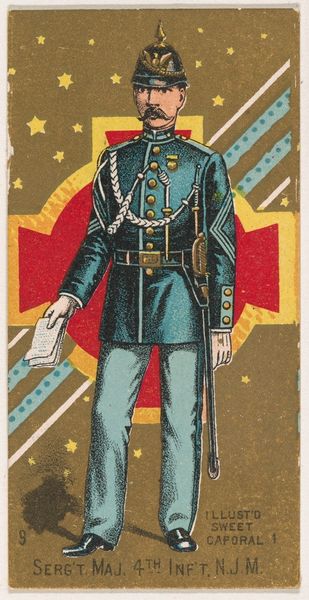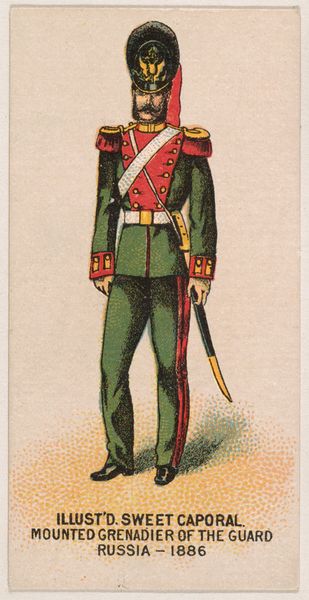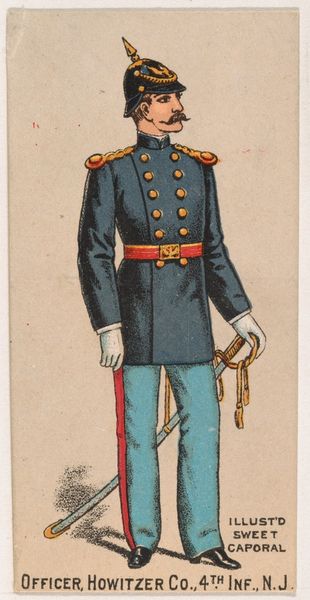
Private, National Rifles, Washington, D.C., from the Military Series (N224) issued by Kinney Tobacco Company to promote Sweet Caporal Cigarettes 1888
0:00
0:00
drawing, coloured-pencil, print
#
portrait
#
drawing
#
coloured-pencil
# print
#
caricature
#
caricature
#
coloured pencil
#
soldier
#
naive art
#
men
#
watercolour illustration
#
genre-painting
#
academic-art
#
miniature
#
profile
Dimensions: Sheet: 2 3/4 × 1 1/2 in. (7 × 3.8 cm)
Copyright: Public Domain
Editor: So, here we have a piece called "Private, National Rifles, Washington, D.C." made around 1888 by the Kinney Tobacco Company. It’s a colored-pencil print from a series promoting Sweet Caporal Cigarettes. The soldier in the red coat has such a stiff, almost comical pose. What do you see in this piece beyond a simple advertisement? Curator: Beyond its commercial purpose, I see a reflection of late 19th-century anxieties about nationalism and militarism, particularly within the context of a rapidly industrializing and racially stratified America. How does this idealized, perhaps even satirical, representation of a soldier connect to the social realities of the time? Editor: That’s interesting. I hadn’t considered it as a commentary. It feels more like a celebration of patriotism, or perhaps even a parody. Curator: But whose patriotism? Consider the composition—the rigid posture, the uniform, the deliberate profile view. Doesn't it also create distance? This was a period when military service and its representations were often used to reinforce social hierarchies, masking underlying tensions related to class, race, and immigration. What do you notice about the figure’s expression? Editor: Now that you mention it, his face does seem blank, almost mask-like. And the idealized uniform feels less celebratory and more…oppressive. Almost like a symbol of forced conformity. Curator: Exactly. These images were circulated widely. How do you think these sorts of depictions played into constructing, and possibly critiquing, societal expectations around masculinity and civic duty during that time? It’s also crucial to remember that tobacco companies at the time had different approaches, appealing to particular consumers and some even used racial stereotypes. Editor: I see now. It's more than just a portrait; it's a window into the complex social and political landscape of the era. Thinking about it that way opens up so many new questions. Curator: Precisely! Examining popular imagery allows us to excavate the unspoken narratives and power dynamics at play, even in something as seemingly innocuous as a cigarette card. I now have to reconsider how I have seen these ads in the past.
Comments
No comments
Be the first to comment and join the conversation on the ultimate creative platform.
